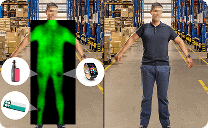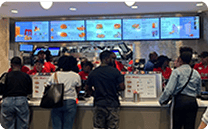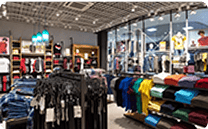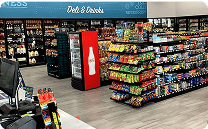In This article
A bullet camera is among the most recognizable and widely used forms of surveillance cameras. Named for their sleek, tubular shape, they are often installed in fixed positions to monitor a specific field of view. Due to their straightforward installation, clear directional focus, and visible deterrent effect, bullet cameras can be utilized for indoor and outdoor security.
A bullet camera’s casing is usually weather-resistant, making it well-suited for environments exposed to dust, rain, or temperature fluctuations. Many models include infrared (IR) night vision, high-definition imaging, and built-in sun shields to improve visibility in low-light or high-glare conditions.
One of the defining characteristics of bullet cameras is their directional focus. Unlike dome cameras that are intended for wide-area coverage, bullet cameras are designed to aim at a specific location. This makes them especially useful when monitoring a particular door, aisle, loading dock, or perimeter area.
Installation is typically simple. Bullet cameras are mounted on brackets that can be adjusted to get the desired viewing angle. Their long form factor also allows for more space within the housing, which can accommodate larger lenses or internal components.
Common business uses for a bullet camera include:
- Monitoring building entrances and exits to capture clear footage of everyone coming and going.
- Overseeing parking lots and outdoor walkways where long-range viewing is needed.
- Watching warehouse aisles or storage zones to track movement and inventory activity.
- Placing them above drive-thru lanes or loading docks for continuous vehicle tracking.
While they can be used indoors, bullet cameras are often favored for exterior use due to their sturdy build and high visibility, which can discourage unwanted activity simply by being present.
Key advantages of a bullet camera include:
- Long-range visibility for focused monitoring in large or open areas.
- Flexible placement on walls, ceilings, or poles depending on the use case.
- Weather-resistant housings that protect internal components in outdoor settings.
- Built-in infrared or low-light technology to capture footage at night or in dim conditions.
- Easy maintenance and angle adjustment, thanks to their external housing and exposed lens direction.
That said, there are also a few considerations. Bullet cameras are more visible than dome or covert models, which might not suit locations where discretion is preferred. Their extended shape can also be more vulnerable to tampering if not installed out of reach or with protective mounts. Additionally, because they’re designed to capture narrow fields of view, more units may be required to cover an entire space compared to wide-angle options.
Bullet cameras are reliable tools for focused coverage and incident documentation when integrated into a larger surveillance system. They are often paired with dome cameras or PTZ (pan-tilt-zoom) models to achieve complete site visibility while maintaining detailed coverage in key areas.
Targeted Visibility Starts with DTiQ
The DTiQ 360iQ platform supports bullet cameras from many manufacturers. VIDEOiQ offers intelligent video designed to cover critical areas with clarity and precision. Whether monitoring high-risk entry points, overseeing outdoor spaces, or protecting assets across multiple sites, DTiQ helps you combine focused video coverage with actionable insight to strengthen your security strategy from every angle. Contact us for more information.





























